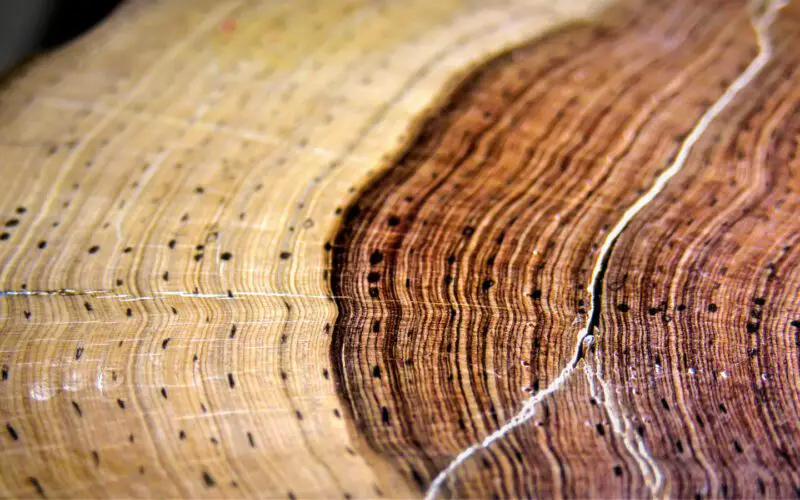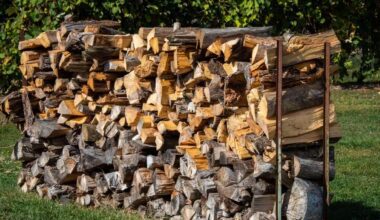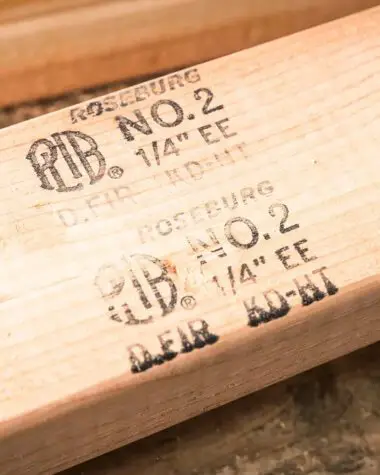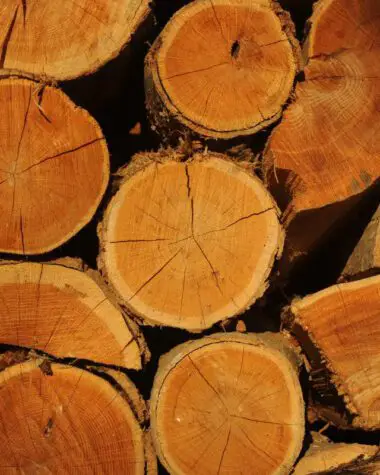A reason why wood is so amazing has something to do with its many vital components. For this reason, wood is considered a heterogeneous mixture and neither a pure substance nor an element. The elements and compounds found in a piece of wood are not evenly distributed throughout the wood part.
If you were to get a sample of wood from different parts of a tree, you would find that one sample is different from another. A sample may have more water or oxygen than another area. Another sample may have tree sap, while some may have none. Different elements and compounds are found in varying levels in a mixture, and this is what happens in wood.
Read: Sapwood vs. Heartwood
Explanation: Pure Substance
Science defines a substance as pure if it is made of only one type of element (such as gold or copper) or if it is free of contaminants. Thus, if one has one type of building block, it is said to be pure. As long as there is only one type of element or compound, these building blocks can be either elements or compounds.
When talking about compounds, the substance can only contain one specific type of compound. Carbon dioxide is an excellent illustration of a pure substance formed from a compound.
Meanwhile, wood is fibrous and porous and made up of living and dead cells. These cells are the source of lignin and cellulose. The fibers are made of cellulose, and the lignin keeps them together.
A tree contains various compounds, including sap, water, and other chemicals or minerals that the tree absorbs when it takes in water from the ground, in addition to the structural components of the tree (cellulose and lignin).
Many of these are retained by the wood even after a tree has been felled, albeit the water eventually dries out. Wood cannot be a pure substance because it contains various components and compounds.
Explanation: Mixture
It is more accurate to classify wood as a mixture. Specifically, it falls under a heterogeneous mixture. A mixture is a compound that contains more than one substance but does not contain chemical bonds between the substances.
Further, when a substance is not chemically uniform throughout, it is said to be heterogeneous. This means that a sample you take from one location can differ from a sample you take from another location.
Wood tends to have inconsistent components. There could be different amounts of water in different wood parts. Also, the density of the tree (the closeness of cell packing) may vary across the tree. Wood forms and expands in response to its surroundings. However, this also implies that wood is not a stable composition.
The Anatomy Of Wood
Wood is composed of cells, and only the cell walls have specific gravity. Cell matrices inside wood vary in shape, size, and arrangement. Similar to a sponge made of lignocellulose which has lower specific gravity than the theoretical maximum due to the amount of space in the matrix filled with air and water.
Wood is similar to a sponge because most wood can float in water and have specific gravities with values less than 1.0. A few tropical hardwoods are heavier than water and will sink.
The known heaviest wood in the world is lignum vitae (Guaiacum officinale), with a specific gravity of 1.05 when it is still green. However, green wood has a moisture content from 30% to over 200%. Because there is a lot of water inside the wood chambers, this wood is unfit for burning and construction. Wood must be seasoned or dried well before being used completely.
Conclusion
Wood is not an element, and it is not a substance. It is classified as a heterogeneous mixture because it contains various compounds in varying proportions. Wood is composed of different elements and compounds, and these are responsible for varying characteristics in different wood species. These varying properties of wood reflect its versatility to be used in any application– a kind of fact about wood that is life-changing.








